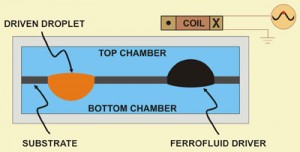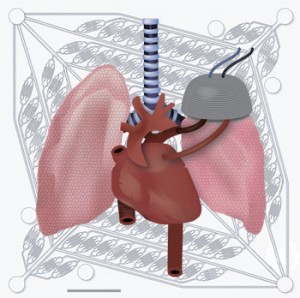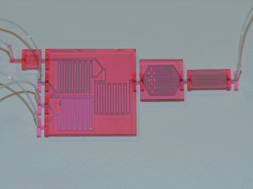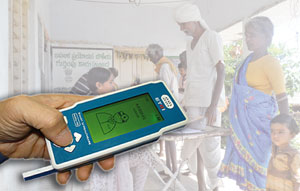This month sees the following articles in Lab on a Chip that are in the top ten most accessed:-
Simple room temperature bonding of thermoplastics and poly(dimethylsiloxane)
Vijaya Sunkara, Dong-Kyu Park, Hyundoo Hwang, Rattikan Chantiwas, Steven A. Soper and Yoon-Kyoung Cho
Lab Chip, 2011, Advance Article, DOI: 10.1039/C0LC00272K, Technical Note
Stand-alone self-powered integrated microfluidic blood analysis system (SIMBAS)
Ivan K. Dimov, Lourdes Basabe-Desmonts, Jose L. Garcia-Cordero, Benjamin M. Ross, Antonio J. Ricco and Luke P. Lee
Lab Chip, 2011, Advance Article, DOI: 10.1039/C0LC00403K, Paper
Hydrogel droplet microarrays with trapped antibody-functionalized beads for multiplexed protein analysis
Huiyan Li, Rym Feriel Leulmi and David Juncker
Lab Chip, 2011, 11, 528-534, DOI: 10.1039/C0LC00291G, Paper
Optoelectrofluidic platforms for chemistry and biology
Hyundoo Hwang and Je-Kyun Park
Lab Chip, 2011, 11, 33-47, DOI: 10.1039/C0LC00117A, Critical Review
High-density fabrication of normally closed microfluidic valves by patterned deactivation of oxidized polydimethylsiloxane
Bobak Mosadegh, Hossein Tavana, Sasha Cai Lesher-Perez and Shuichi Takayama
Lab Chip, 2011, Advance Article, DOI: 10.1039/C0LC00112K, Technical Note
Mechanics of cell spreading within 3D-micropatterned environments
Marion Ghibaudo, Jean-Marc Di Meglio, Pascal Hersen and Benoit Ladoux
Lab Chip, 2011, Advance Article, DOI: 10.1039/C0LC00221F, Paper
Tackling HIV through robust diagnostics in the developing world: current status and future opportunities
Darash Desai, Grace Wu and Muhammad H. Zaman
Lab Chip, 2011, 11, 194-211, DOI: 10.1039/C0LC00340A, Tutorial Review
Lung assist device technology with physiologic blood flow developed on a tissue engineered scaffold platform
David M. Hoganson, Howard I. Pryor II, Erik K. Bassett, Ira D. Spool and Joseph P. Vacanti
Lab Chip, 2011, Advance Article, DOI: 10.1039/C0LC00158A, Paper
Some recent advances in the design and the use of miniaturized droplet-based continuous process: Applications in chemistry and high-pressure microflows
Nicolas Lorber, Flavie Sarrazin, Pierre Guillot, Pascal Panizza, Annie Colin, Bertrand Pavageau, Cindy Hany, Patrick Maestro, Samuel Marre, Thomas Delclos, Cyril Aymonier, Pascale Subra, Laurent Prat, Christophe Gourdon and Emmanuel Mignard
Lab Chip, 2011, Advance Article, DOI: 10.1039/C0LC00058B, Frontier
Integrated microfluidic platform for the electrochemical detection of breast cancer markers in patient serum samples
Alex Fragoso, Daniel Latta, Noemi Laboria, Frithjof von Germar, Thomas E. Hansen-Hagge, Wolfgang Kemmner, Claudia Gärtner, Richard Klemm, Klaus S. Drese and Ciara K. O’Sullivan
Lab Chip, 2011, Advance Article, DOI: 10.1039/C0LC00398K, Paper
Why not take a look at the articles today and blog your thoughts and comments below.
Fancy submitting an article to Lab on a Chip? Then why not submit to us today or alternatively email us your suggestions.
















